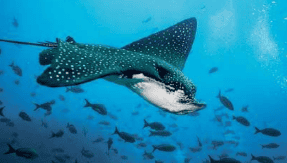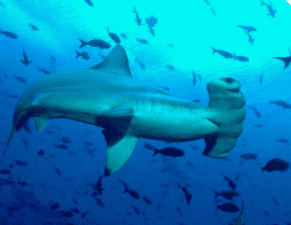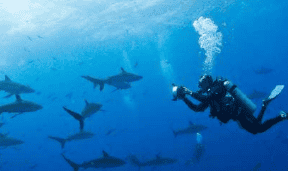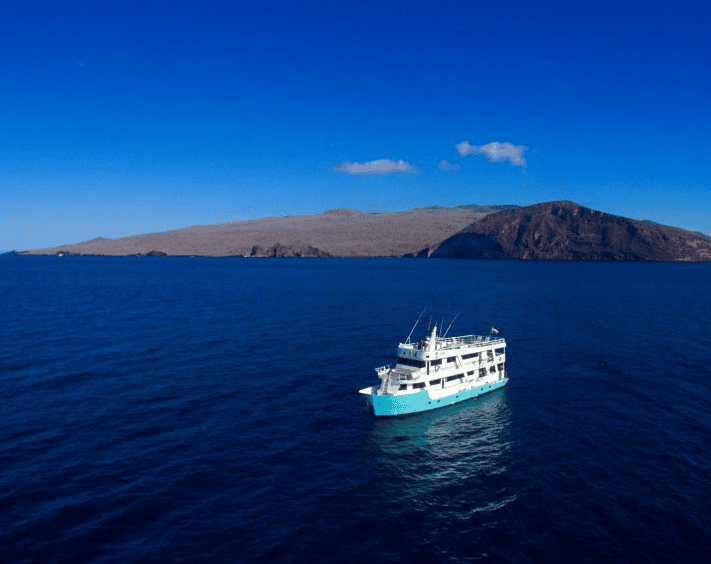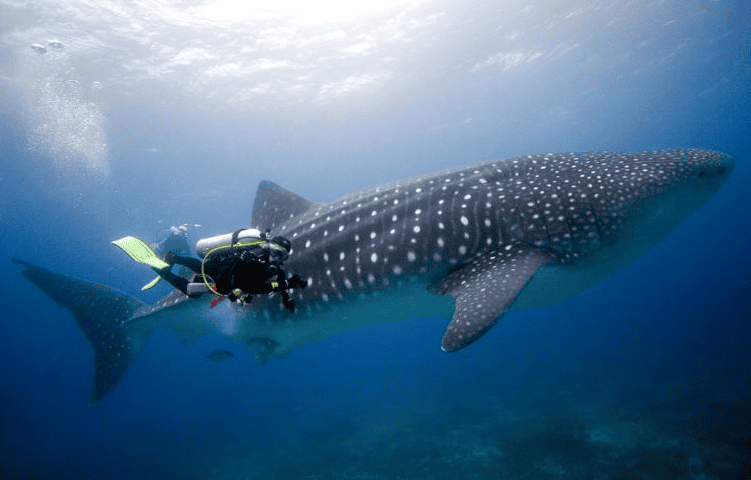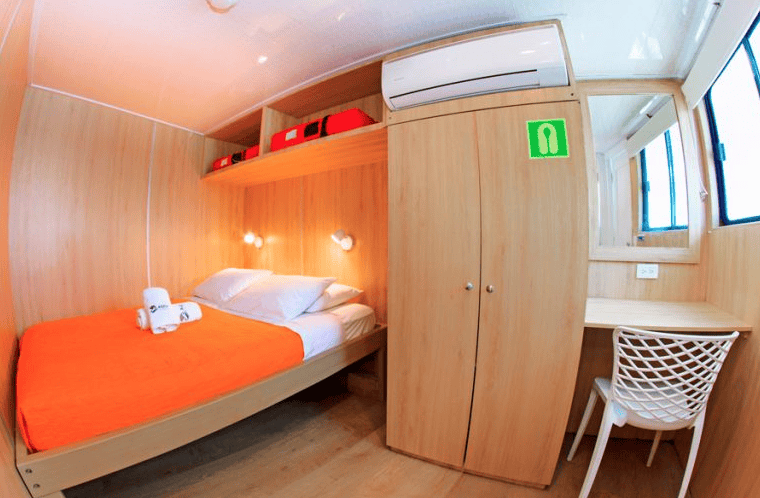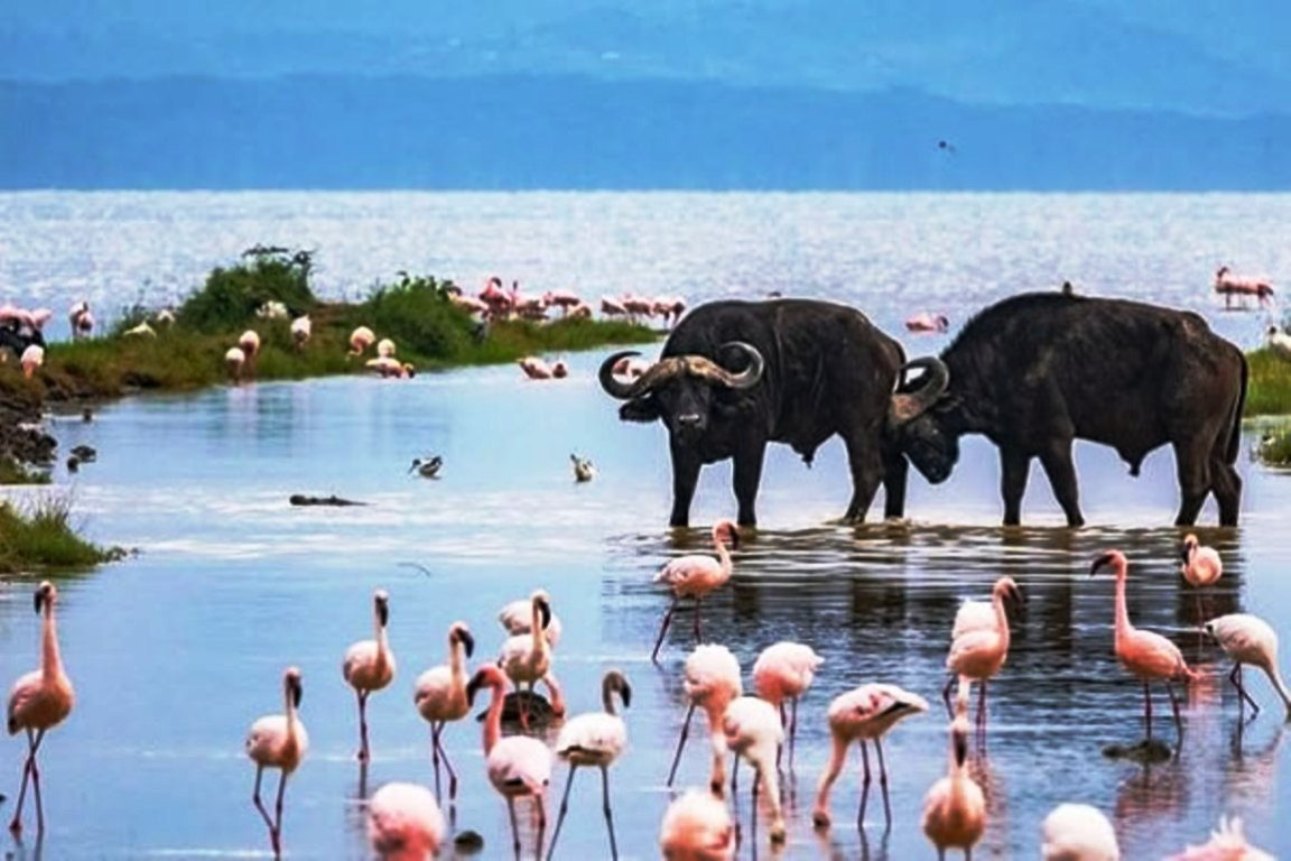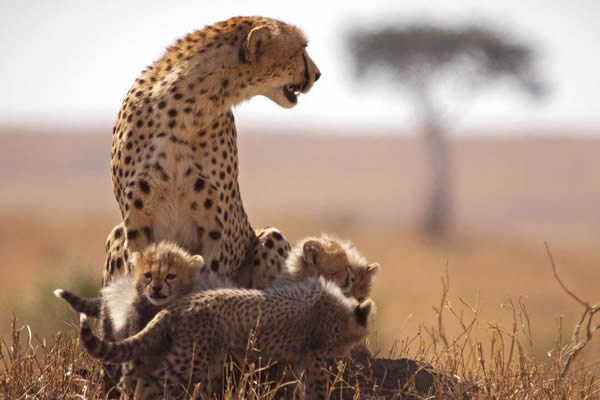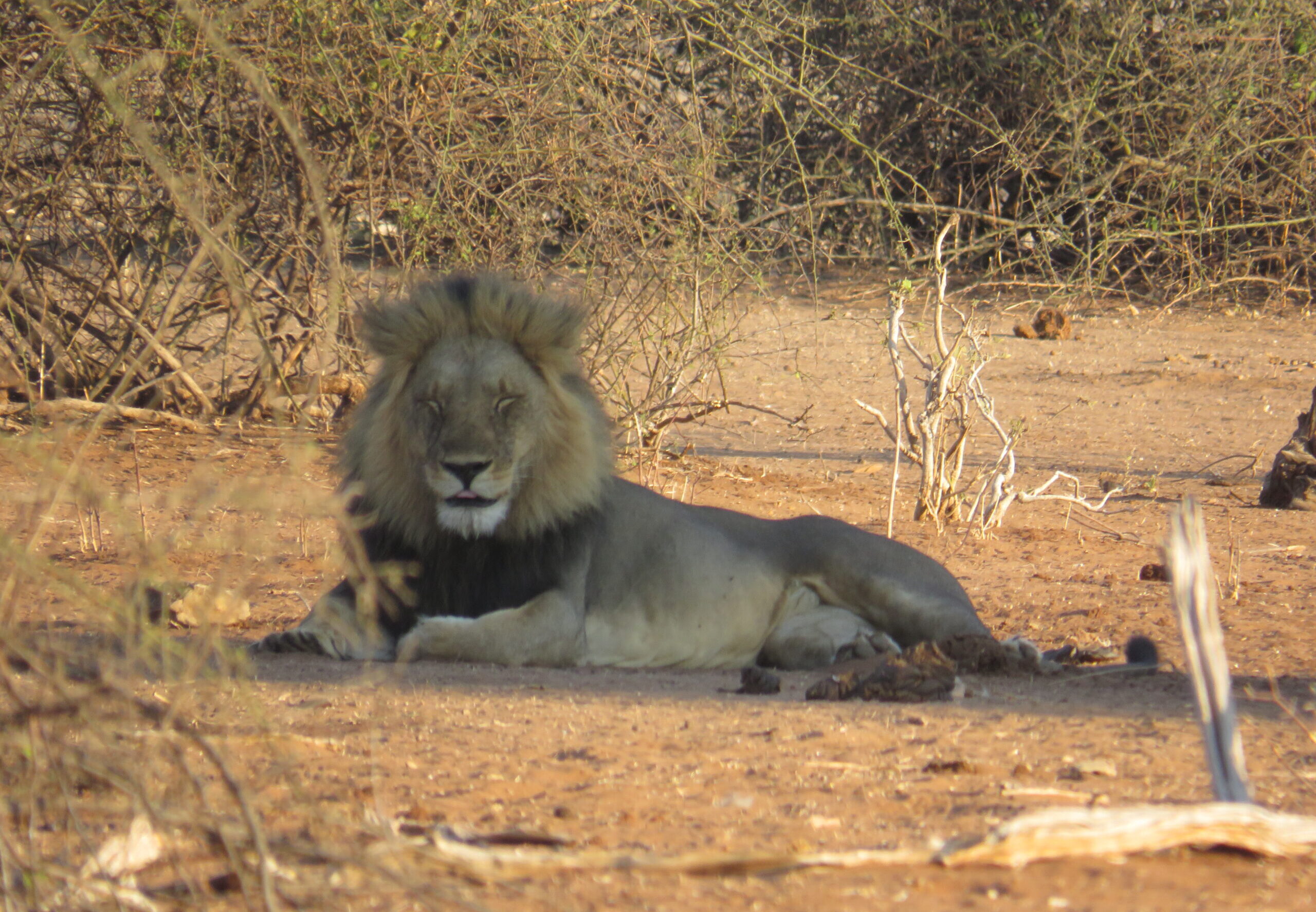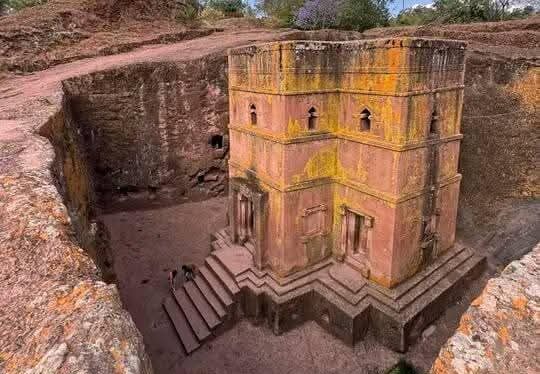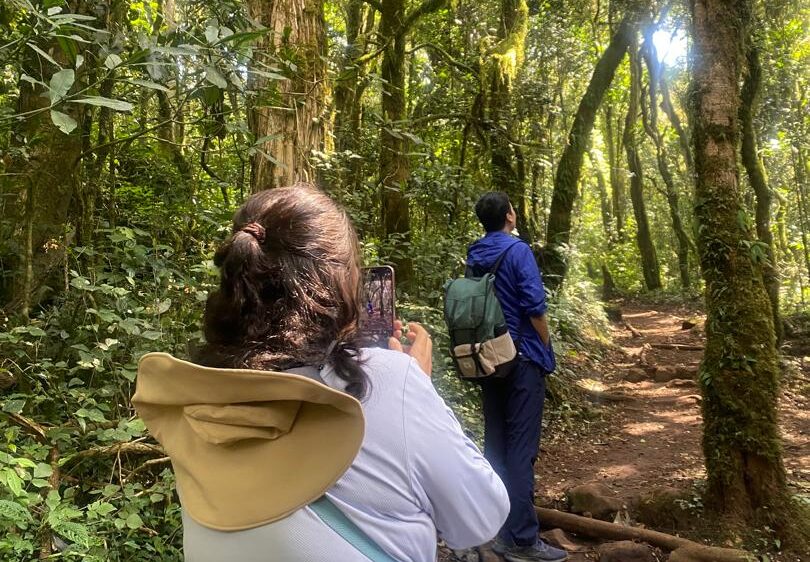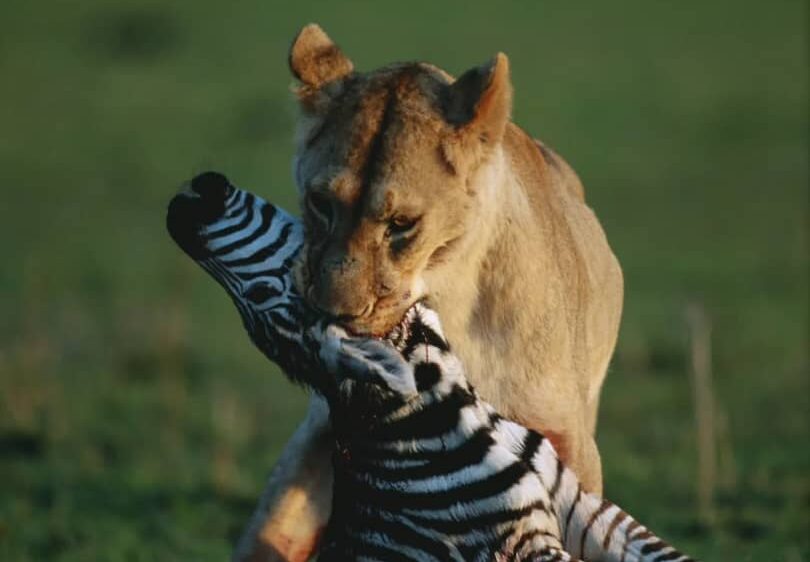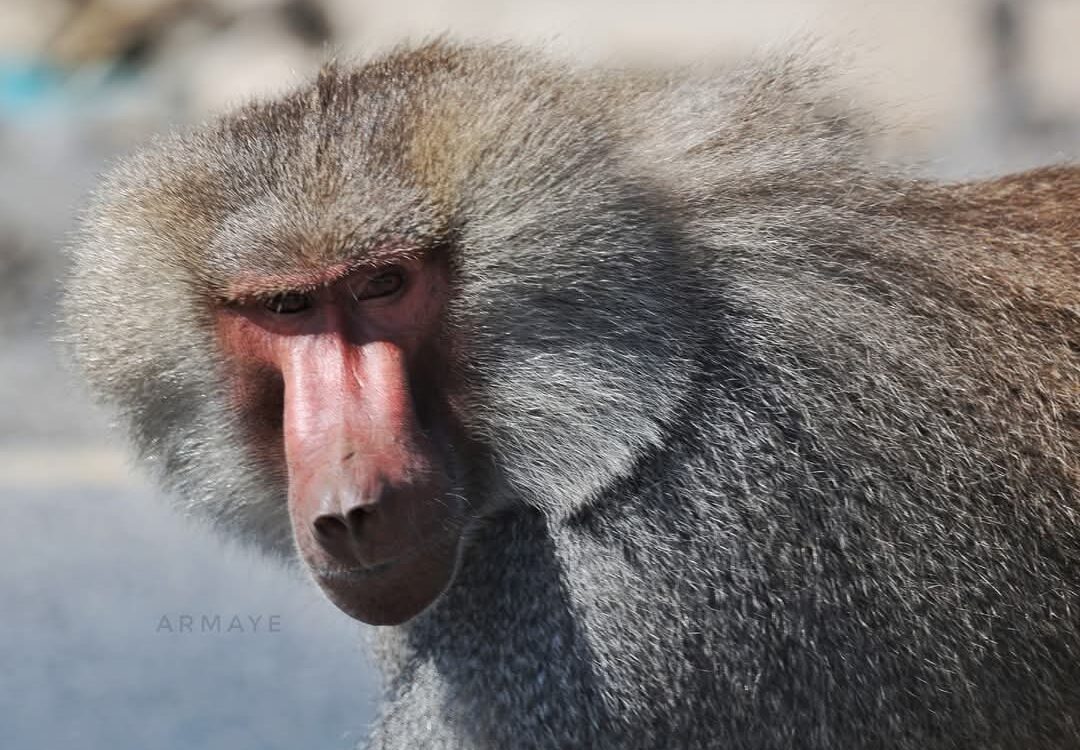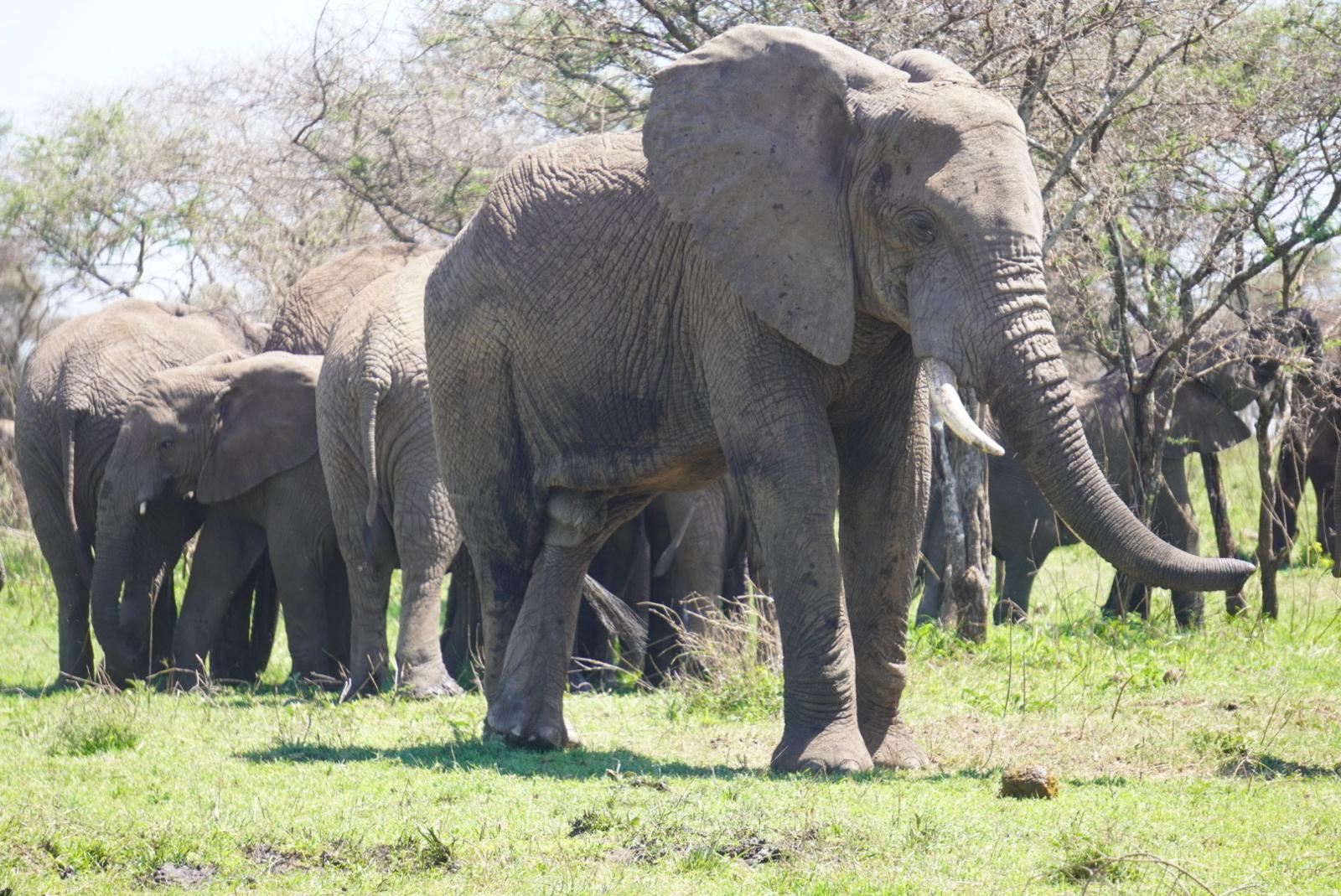 8 Days from$5000 p/p in USD
8 Days from$5000 p/p in USD DeparturesYear Round
DeparturesYear Round
Destinations
Ecuador, Galapagos,
Tour Type
Guided, Small Group
Safari Standard
Mid Range
Tour Overview
This amazing cruise has been carefully designed for travelers who want to travel “deeper” into the enchanted islands – the Galapagos Islands. It enables close encounters with marine life in the most spectacular diving sites of the Galapagos Islands.
General Information
- Safari types:Cruise Safari, Dive Safari
- Activities:Walking Safari, Diving, Swimming
- Getting around:Motor Boat, Domestic Flight
- Start/end:Start/end in Mariscal Sucre Aiport, Quito
- Minimum age:3
Price Per Person – USD
From USD 5,599 per person, based on two travelling
If you are a Solo traveler you will be charged a Single Supplement
What's Included
- Air ticket from Quito to Galapagos and back
- Airport-yacht-airport transfers
- Lodging on board in a cabin with private facilities
- Three meals per full day; unlimited water, coffee, and tea
- All excursions as per itinerary with one English-speaking certified dive guide per 8 guests
- 12L tanks for air, weights, belts, scuba safety equipment (personal marine rescue GPS), and towels.
What's Excluded
- International flights & visas
- Galapagos National Park entrance fee (USD 200 pp)
- Transit Control Card (USD 20 pp)
- Full dive equipment rental (BCD, regulator, mask, fins, 7mm wetsuits, hoods, gloves, boots, torch)
- Nitrox (USD 150 pp)
- Soft and alcoholic drinks
- Travel insurance (medical coverage, trip cancellation & dive accident insurance)
- Other items of a personal nature
Disclaimer
- This itinerary is owned and delivered by ‘Responsible Travel‘
- All prices are ‘From’ and may vary at the time of booking
- Display price is usually based on two people sharing
- ‘Responsible Travel‘ reserves the right to change the content and price of the itinerary
- All itineraries and services are subject to availability
Day by Day Overview
AM – Flight from Quito to Baltra Airport
The starting point for this adventure will be at the Mariscal Sucre Airport in Quito, Upon arrival at Seymour Ecological Airport, a check-up is carried out first, to ensure that no foreign plant or animal species are introduced on the islands. Then, your TCC (Transit Control Card) will be stamped; this must be kept safe during your trip, as it has to be presented again on your return flight. Lastly, the entrance to the Galapagos National Park is due for entry (USD 200), if this has not yet been paid.
Your guide will meet you at the airport, assist you with the luggage, and accompany you on the short bus ride. Here you will climb aboard the yacht, where the crew and the captain will greet all passengers. Your cabin will be assigned and you can check any rented diving gear. After this, the guide will begin the briefing about safety and activity details, as well as the afternoon’s dive. Finally, you will enjoy your first lunch on board.
PM – North East Baltra
This is the perfect spot to start your adventure with moderate currents. This dive site is for adventurous divers looking to see fascinating lava and rock formations, as well as an incredible number of marine species. At a depth of around 20m/60 ft, we might see white-tip reef sharks, pelagic sharks, reef sharks, rays, and turtles. Additionally, sea lions will be your companions upon entry and on the safety stops. Occasionally, hammerhead sharks can be spotted swimming nearby.
Return on board for dinner and amusement at the social areas.
AM – Cape Marshall (Isabela)
Cape Marshall is located on the northeastern coast of Isabela island, just a bit south of the equatorial line and the base of the active Wolf volcano. This area offers drift diving and also an almost vertical wall of volcanic rock that falls all the way to the bottom of the sea. This is a
great location for spotting hammerhead, white-tipped, and Galapagos sharks.
Occasionally, whale sharks can also be seen. There are huge schools of black-striped salema and barracudas. You can also see black coral
growing along the volcanic wall.
PM – Manta’s city
A unique attraction near Cape Marshall’s is a place where giant manta rays are so often seen that it was named “Manta’s City”. They
roam feeding in the plankton-rich waters, so visibility can be below. After returning on board, we will start sailing towards
Darwin, as the distance to cover is quite considerable.
Due to the large number of dive sites available in Darwin and Wolf as well as the marked influence that marine conditions can have on the area, the 4-daily dive sites will be chosen with these factors in mind.
The guide will communicate with all passengers in advance to inform them about the location, expected conditions and alternatives of each site, and learn about their interests. On Friday, the fourth day of the expedition, conditions may be suitable for night diving in one of the two available locations. The regular options include the following:
- El Darwin’s Arch, Darwin
- Darwin’s Theatre, Darwin
- El Arenal, Darwin
- Shark Bay, Wolf
- El Derrumbe, Wolf
- Pinnacle and the Caves, Wolf
- The Secret Cave (night dive), Wolf
- El Fondeadero (night dive), Wolf
Due to the large number of dive sites available in Darwin and Wolf as well as the marked influence that marine conditions can have on the area, the 4-daily dive sites will be chosen with these factors in mind.
The guide will communicate with all passengers in advance to inform them about the location, expected conditions and alternatives of each site, and learn about their interests. On Friday, the fourth day of the expedition, conditions may be suitable for night diving in one of the two available locations. The regular options include the following:
- El Darwin’s Arch, Darwin
- Darwin’s Theatre, Darwin
- El Arenal, Darwin
- Shark Bay, Wolf
- El Derrumbe, Wolf
- Pinnacle and the Caves, Wolf
- The Secret Cave (night dive), Wolf
- El Fondeadero (night dive), Wolf
Due to the large number of dive sites available in Darwin and Wolf as well as the marked influence that marine conditions can have on the area, the 4-daily dive sites will be chosen with these factors in mind.
The guide will communicate with all passengers in advance to inform them about the location, expected conditions and alternatives of each site, and learn about their interests. On Friday, the fourth day of the expedition, conditions may be suitable for night diving in one of the two available locations. The regular options include the following:
- El Darwin’s Arch, Darwin
- Darwin’s Theatre, Darwin
- El Arenal, Darwin
- Shark Bay, Wolf
- El Derrumbe, Wolf
- Pinnacle and the Caves, Wolf
- The Secret Cave (night dive), Wolf
- El Fondeadero (night dive), Wolf
AM – Punta Vicente Roca, Isabela
Right at the mouth of the seahorse that Isabela Island resembles from space, is located Vicente Roca Point. The roaring echoes of the
waves will accompany you as you enter a dark cave under a spectacular arch. Around the corner, the collapsed amphitheater of
the Ecuador Volcano offers another breathtaking view.
The calmer waters of the caves are well protected from the ocean swell and are great for snorkeling amongst various species of sharks, penguins, pufferfish, and even seahorses. Encounters with sunfish are also very common, and it’s worth bearing in mind that the water in
this area tends to be a little cold (hence the penguins!).
PM – Douglas Cape, Fernandina
Douglas Cape is sure to provide you with incredible opportunities to observe an abundance of marine life, above and below the water. As
you prepare for your dive, you can see Galapagos penguins, Galapagos cormorants, and Galapagos marine iguanas, animals
that are only found on the islands. We will also go in search of amazing marine iguanas swimming and
feeding on the rocks beneath the surface. Some of the marine life you may see are the red-lipped batfish, horned dogfish, sunfish, and
possibly whales!
AM – Roca Cousin, Santiago
The solitary, symmetrical pyramid of Cousin Rock rises just above the coastal waters of Santiago, approximately 5 km off its coast. This
bare volcanic rock serves as a resting place for blue-footed boobies, brown pelicans, Galapagos seals, sea lions and Galapagos penguins, which might be seen during a boat ride. It doesn’t take much imagination to realise that this triangular formation is the tiny top of a huge underwater cone, although only divers and snorkellers can admire the unthinkable colourful world below.
Cousin’s Rock features two popular dive sites: an adventurous wall dive around the steep north-east corner (intermediate level) and on
the opposite side, an attractive ridge flanked by a lush terraced wall and a rarely visited rock formation further south. The actual points of
descent around Cousin’s Rock and dive directions depend on the currents.
Normally, you will dive twice at one of these sites. Dive depths at Cousin’s Rock range from 12-30m, and the current can vary from medium to strong. The water temperature ranges between 20-26°C from January to May, and between 16-20°C from June to December.
Visibility ranges from 12-30 m, and the site is mostly a reef dive. Low visibility usually means an abundance of plankton, which brings
large numbers of small and pelagic fish and with them, large animals.
PM – Highlands, Santa Cruz
Your last visit is very contrasting to your previous underwater experiences. You will explore a Giant Tortoise Reserve in the Scalesia forest-covered highlands of Santa Cruz. This is the best place to look for Galapagos giant tortoises in their most authentic environment! Despite the interesting breeding centres -where you are guaranteed to find tortoises in their pens- there is nothing better than watching
them in their wilderness. Although it can be quite wet and muddy, your visit can turn into an adventurous quest when you realise they
have quietly left their favourite pond.
Unlike the adjacent agricultural area, this Tortoise Reserve is a protected area and an official part of the Galapagos National Park. It stretches from El Chato Hill to the southwest coast of Santa Cruz Island, where females follow Darwin’s “tortoise roads” to lay their
eggs.
In 2015, an estimated 32,000 tortoises were living in the wild on all the islands, most of them in the restricted locations on Isabela Island. In addition to the tortoises, you can also see a native flake forest, covered with lichens, ferns and other epiphytes. This protected area
also offers excellent opportunities to observe numerous endemic songbirds among the dense foliage, savouring the delicacy of the
introduced blackberries, including Darwin’s finches, colourful cardinal flycatchers and yellow warblers.
The turtle pond is also home to waterfowl, including the red-billed coot. If you’re lucky, you might spot the elusive Galapagos chick in the tall grass or the short-eared owl at the entrance to the lava tunnels.
Transfer to Baltra airport
It’s time to say goodbye to your fellow passengers and crew! Assisted by the naturalist guide and some crewmembers, the boat will take
you and your luggage to the Seymour Ecological Airport, to board your flight back to the mainland.
Login to your account
Register as a traveller if you are looking for deals
Register as a travel partner if you offer amazing safaris





























